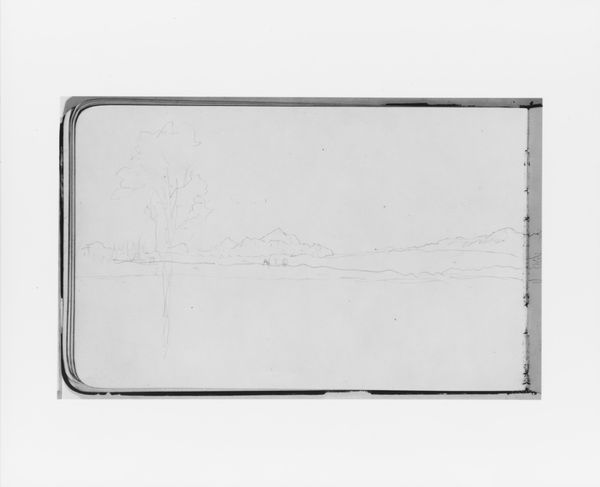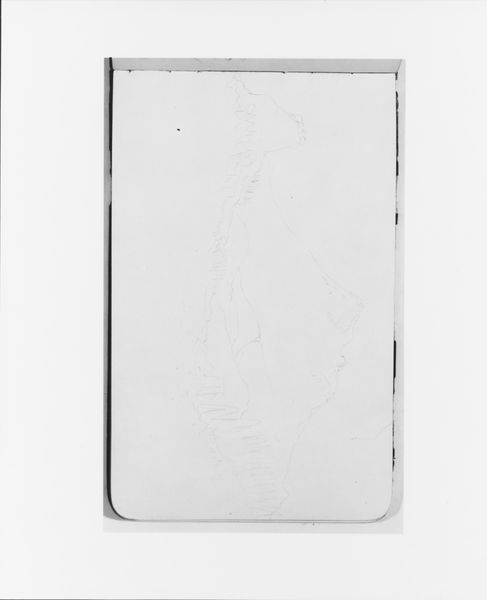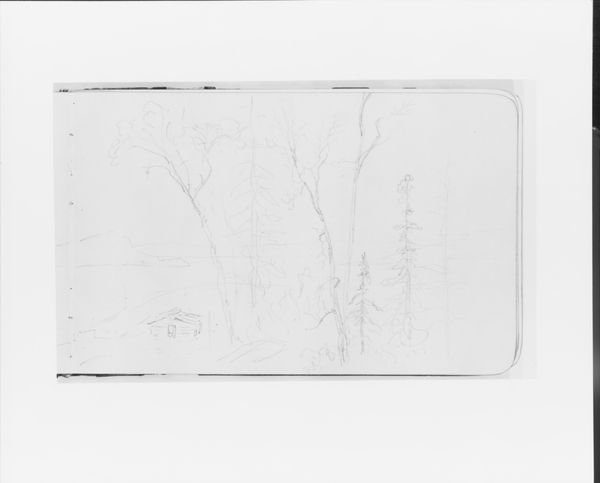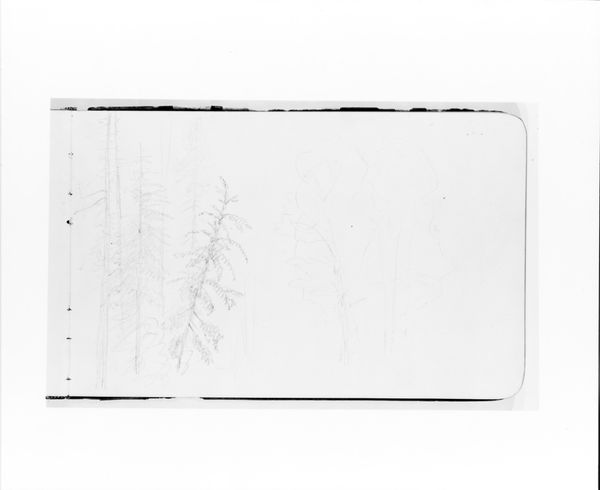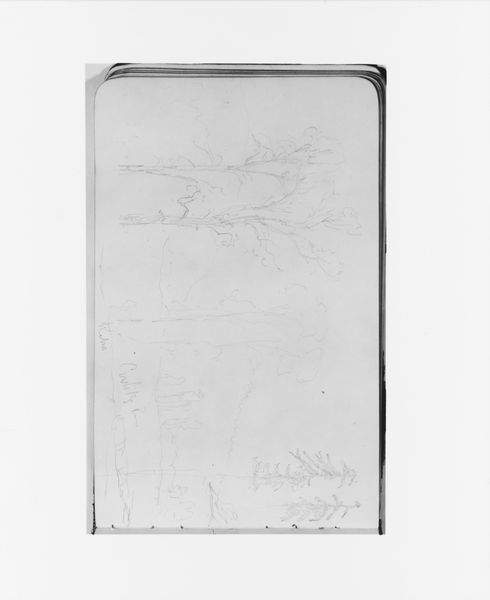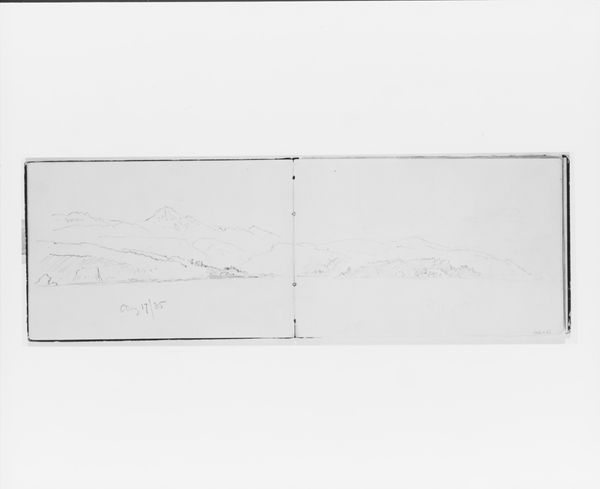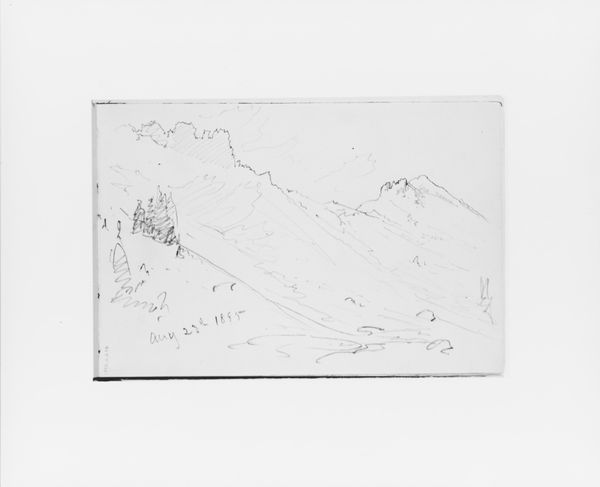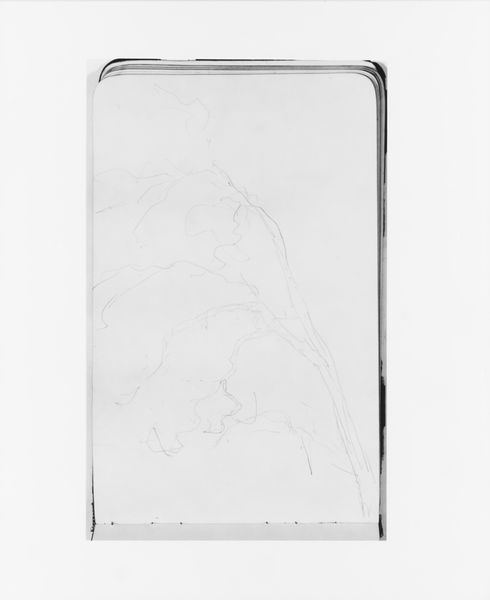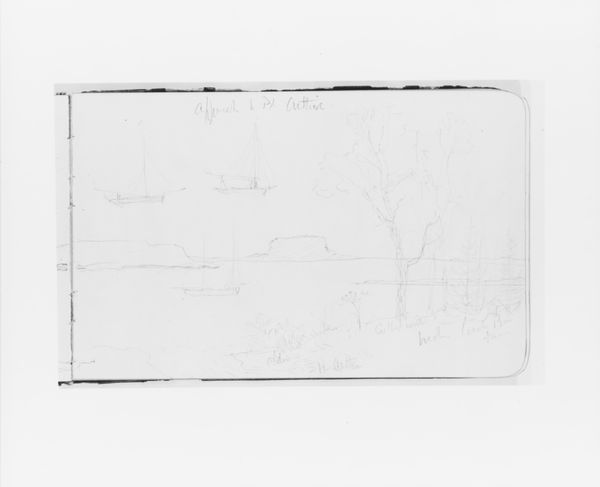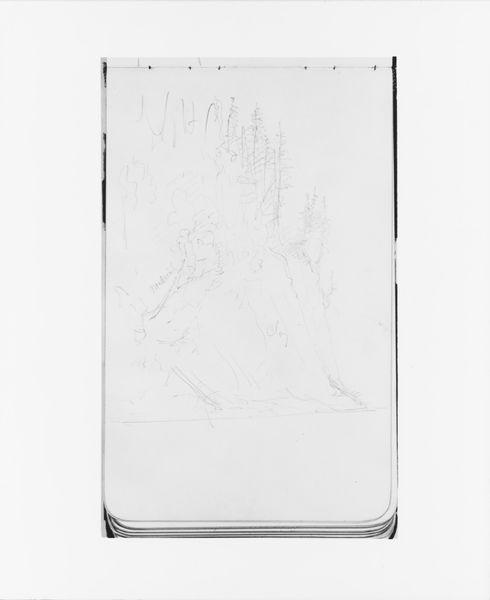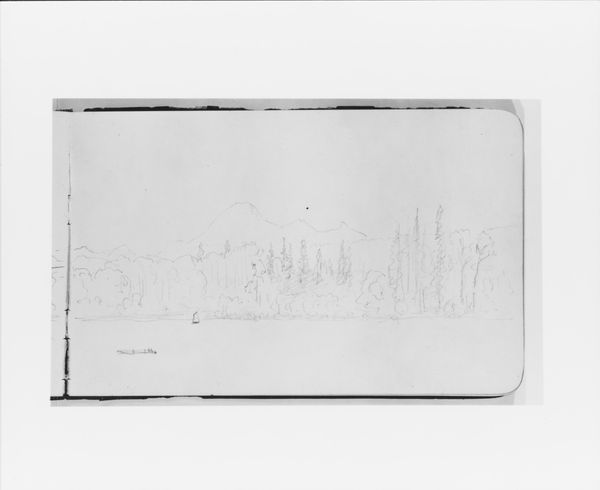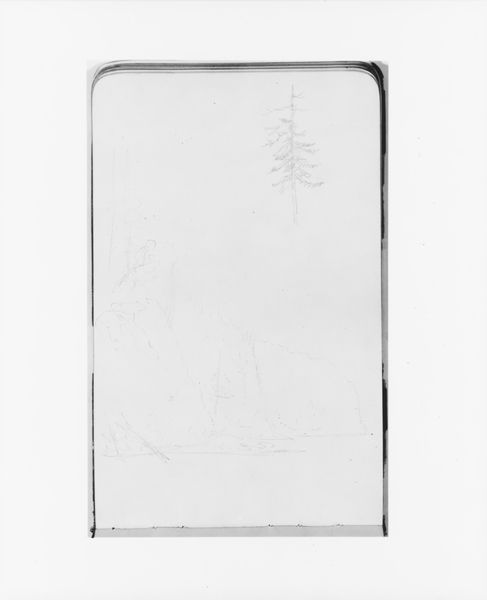
Dimensions: 4 3/4 x 7 3/4 in. (12.1 x 19.7 cm)
Copyright: Public Domain
Curator: Let's discuss Albert Bierstadt's "Canadian Mountain Peaks (from Sketchbook)," created around 1890. It’s a pencil drawing. What strikes you immediately? Editor: The starkness. It feels like a preliminary study, almost ephemeral in its lightness. The composition is surprisingly open, allowing the void to speak as loudly as the peaks themselves. Curator: Precisely. Bierstadt, known for grand landscapes, reveals here a more intimate engagement with his subject. I’m interested in what this implies about his artistic process: the labor involved, and how these kinds of drawings act as documentation of Bierstadt's encounter with this geography, filtered through a European lens of course. Editor: And formalistically, observe how the linear quality, almost fragile, contradicts the imposing mass of mountains we expect. There is the contrasting use of negative space as compositional tool. It suggests not just mountains, but the very atmosphere enveloping them, the thin air, the vastness. Curator: I see the materiality as crucial, revealing an undercurrent of how preliminary sketches contribute to our broader cultural ideas of the American West. How often do we consider that sketches such as this supported larger aesthetic visions, or what the economic impact of selling "views" might be? Editor: Indeed. There is also a romantic undercurrent at play here, albeit subtle, which becomes all the more potent due to this quiet medium. And despite its appearance as simple observation, this "realism" is carefully constructed, not merely mimetic. It's a negotiation between the observed and an ideal. Curator: The pencil's ease of transport allowed Bierstadt access, making landscape itself a commodity in a burgeoning tourism industry. How did access to materials or changing travel capabilities enable these landscape paintings? This drawing then documents not just geography but cultural changes within late 19th-century Canada. Editor: Fascinating how this understated drawing stimulates discussions of grand artistic movements, economic imperatives, and visual conventions! It shows just how carefully an artist wields composition and form. Curator: Ultimately, by examining Bierstadt's artistic production this way, we get closer to seeing the historical forces that produced our concepts of wilderness and aesthetic beauty. Editor: I am struck by how line quality itself has so many dimensions.
Comments
No comments
Be the first to comment and join the conversation on the ultimate creative platform.
